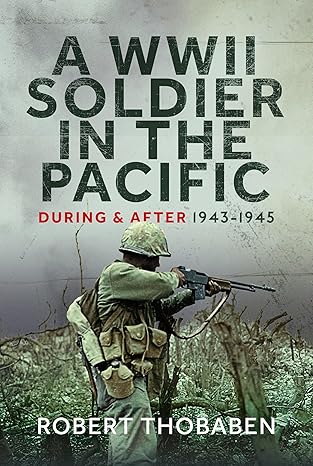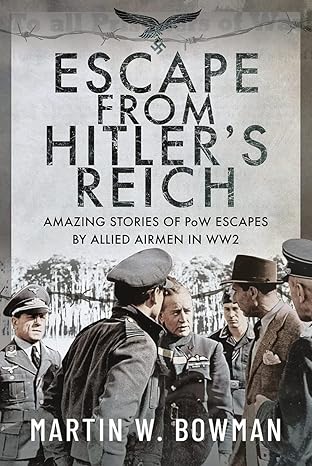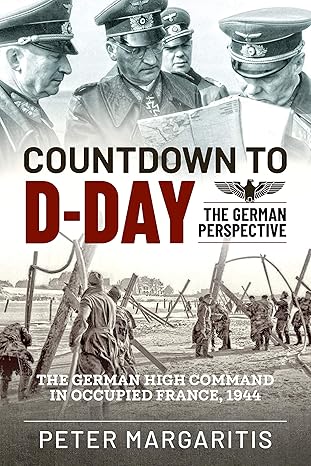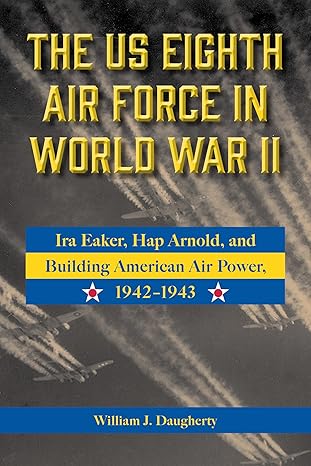Soviet rifle corps in the Russo-German War, 1945
By Bill Wilson
STRELKOVYY KORPUS
This text is respectfully dedicated to the memory of Fernand Radou Belgian soldier from 1922 to 1957
Introduction
For many in the Wehrmacht, the Red Army was for the entire war a poorly-understood force. German intelligence had some idea of how large the Red Army was at various points during the war, but German misconceptions about the Soviet forces have endured in the popular imagination, lending vague notions of "red hordes" and overwhelming numerical superiority.
Even though the structure of these forces has been made available by Russian sources, it remains a little known topic of the Second World War. Significant among the obscuring factors is the sheer number of formations fielded by the Soviets. Even their largest field force, the fronts, would be difficult to list from memory. Likewise, the situation for combined-arms armies and, further down, rifle corps is even more problematic because of their quantity.
The rifle corps are not well known, and a misconception lingers that the Soviets abolished the echelon of rifle corps in late 1941 for the duration of the war. While it is true this command echelon almost disappeared from the Red Army during this period, it did not vanish completely, and was in fact rebuilt from late 1942 forward as the wartime structure of the Soviet forces matured.
A complicating factor is the varying interest in different periods of the war. It is only recently that more interest has been shown by historians in the final struggle for Germany itself. A key part of this struggle was the military structure of the combatants, and the Soviet Army was by far the largest land force in the field by 1945.
This document identifies the rifle corps of the Soviet Army during the period January to May 1945 ("period of interest"), and brings out statistical data to dispel some of the anonymity which inhibits a better understanding of the Soviet forces. The source for this data is overwhelmingly the official order of battle of the Soviet Army (Boevoi sostav Sovetskoi armii).
General Comments
The corps fielded by the Soviet Army were significantly smaller than their western counterparts in terms of personnel strength. This aspect was driven by two factors. The first was the relatively smaller size of component divisions. The second factor keeping the strength of the Soviet corps relatively low were the comparatively few attached supporting units.
Depending on divisional strength, by mid-1943, rifle corps ranged in strength from 12,000 to 24,000 men (Glantz 179). Another document depicts the strength of rifle corps (attachments included) in mid-1944 as between 20,000 and 30,000 men (Connor B1). This may be compared to the roughly 100,000-man strength of a U.S. corps in late 1944 in northwest Europe. In terms of personnel strength, a rifle corps was roughly equivalent to a U.S. infantry division (some 15,000 not including attachments).
Complicating the assessment of the Soviet rifle corps in 1945 was the differentiation between regular rifle corps, light rifle corps, and guards rifle corps. The light rifle corps (126th and 127th) were made up of specialized brigades and employed in rough terrain. The guards rifle corps numbered forty in total and often had more attached supporting units than their regular counterparts. (Glantz 179). Notably, guards rifle divisions were not always subordinated to guards rifle corps and guards rifle corps often had regular divisions subordinated to them. This document takes note of unusual situations concerning such subordination issues.
Finally, the Soviets employed other kinds of corps. Tank and mechanized corps were truly division-sized units made up of brigades. Artillery corps were specialized units. Cavalry corps, like rifle corps, had subordinated divisions, but were typically smaller in personnel strength. These distinctions are important because they reflect on the part of the Soviets a flexible understanding of the concept of a corps as an echelon of command.
Numbers and Distribution
For the period of interest, the Soviet Army fielded 174 rifle corps. Of these, 40 were guards rifle corps, numbered one through forty. The remainder were regular rifle corps, numbered one through one hundred thirty five. Of note is that in December 1944, the 99th Rifle Corps was retitled the 40th Guards Rifle Corps and apparently not formed again before the end of the Russo-German War. Of the 134 regular rifle corps, two (126th and 127th) were light rifle corps of a different structure.
All of the guards rifle corps were committed in action against the Germans, although the 37th, 38th, and 39th Guards Rifle Corps were held in VGK reserve until March 1945. Twenty of the 134 regular rifle corps were subordinated to commands not engaged in operations against the Germans. These twenty were the 2nd, 4th, 5th, 12th, 13th, 17th, 26th, 31st, 34th, 39th, 56th, 58th, 59th, 66th, 82nd, 85th, 86th, 87th, 88th, and 131st. Thus, in action against the Germans were 112 regular rifle corps, two light rifle corps, and 40 guards rifle corps.
With a typical corps commanding three rifle divisions, the distribution of the rifle corps among the fronts in action against the Germans was a function of how many rifle divisions were subordinated to any given front. Nevertheless, it is illuminating to view at a glance the distribution of rifle corps among the fronts (fronts are listed north to south) and the VGK Reserve. This distribution is shown in Table One.
TABLE ONE
DISTRIBUTION OF RIFLE CORPS BY FRONT, 1945
Front Jan-45 Feb-45 Mar-45 Apr-45 May-45
Leningrad 7 7 4 28 25
2nd Baltic 11 12 25 - -
1st Baltic 15 11 - - -
3rd Belorussian 18 21 30 27 12
2nd Belorussian 19 23 14 14 18
1st Belorussian 21 21 21 21 24
1st Ukrainian 22 22 23 23 26
4th Ukrainian 8 8 10* 10* 13*
2nd Ukrainian 13 12 15 12 12
3rd Ukrainian 11 12 12 15 15
VGK Reserve 9* 5* 0 3 9
Totals 154 154 154 153 154
Notes to table.
1. "*" indicates the figure includes the two light rifle corps.
2. The 1st and 2nd Baltic Fronts were deactivated and their forces transferred to other fronts.
3. On 1 April 1945, the 14th Rifle Corps was subordinated to the Belorussian-Lithuanian Military District.
Span of Control
Span of control is the number of subordinate elements controlled by higher management. As the Soviet Army, to the corps echelon at least, was dominantly a force of triangular organization, one may define a rifle corps as having a "normal" span of control of three rifle divisions. Again, the two light rifle corps do not conform to this standard because their subordinate units were brigades and not divisions. In examining the span of control, therefore, the sample includes 112 regular rifle corps and 40 guards rifle corps that were committed in action against the German forces.
- Regular rifle corps
Span of control
(divisions) Jan-45 Feb-45 Mar-45 Apr-45 May-45
0 2 0 0 0 0
1 1 2 2 1 0
2 23 19 28 18 22
3 83 87 76 91 86
4 3 4 4 2 4
5 0 0 2 0 0
% that are
"normal" 74% 78% 68% 81% 77%
"Normal" average for period: 76%
Thus, for the period of interest, on average, three-quarters of the regular rifle corps had a span of control of three rifle divisions, while guards rifle corps, on average, had a span of control of three divisions over four-fifths of the period of interest.
- Guards rifle corps
Span of control
(divisions) Jan-45 Feb-45 Mar-45 Apr-45 May-45
2 4 4 1 3 4
3 30 32 38 33 32
4 6 2 1 4 4
5 0 2 0 0 0
% that are
"normal" 75% 80% 95% 83% 80%
"Normal" average for period: 83%
Cohesiveness of unit subordination
This aspect is reviewed in two ways. The first examines how stable was the subordination of rifle divisions to rifle corps. The second examines how stable was the subordination of rifle corps to higher headquarters.
- Cohesiveness of subordination: division to corps
This was reviewed in groups by front as the fronts existed on 1 January 1945. The subordination of all rifle divisions (as grouped under fronts) was checked for the five months of the period of interest. Subordination of a division to the same rifle corps for a period of four months or more was deemed a significant relationship. By fronts (as the order of battle existed on 1 January 1945), the following number of rifle divisions were subordinated to the same corps for a period of four consecutive months or more.
Front (Divisions Four months % of
in January 1945) or more sample
Leningrad (18) 16 89%
1st Baltic (44) 22 50%
2nd Baltic (31) 16 52%
3rd Belorussian (54) 50 93%
2nd Belorussian (63) 50 83%
1st Belorussian (63) 55 87%
1st Ukrainian (66) 30 45%
4th Ukrainian (25) 20 80%
2nd Ukrainian (39) 14 36%
3rd Ukrainian (33) 17 52%
The figures for the 2nd and 3rd Ukrainian Fronts do not include the 9th Guards Army and its nine rifle divisions. This army was released from VGK Reserve in March 1945 and served with both fronts. Its nine divisions remained subordinated to the same three corps until the end of the Russo-German War. man War. r.
The lower stability percentages for the Baltic Fronts were strongly influenced by their disbandment during the period of interest. These actions forced the reorganization of command relationships, and in many cases, divisions were transferred to other corps, sometimes more than once, during the period of interest. Of minor note is that the 145th and 378th Rifle Divisions, ultimately subordinate to the 1st Baltic Front on 1 January 1945, were both disbanded in March 1945.
An interesting aspect of the table is that it highlights the stability of divisional subordination to corps in the Belorussian Fronts, particularly when compared to the Ukrainian Fronts.
- Cohesiveness of subordination: corps to all-arms (or guards- or shock-) army
Again, a measure of four or more consecutive months was deemed a significant relationship. Only subordination relationships for forces in contact with the Germans or in VGK Reserve were assessed.
Regular rifle corps: 86 of 112 (77%)
Guards rifle corps: 32 of 40 (80%)
As may be seen, the stability of the corps to army subordination relationships was very high. Transfer of corps between armies was an exceptional event.
Guards Formations
Discussion of the guards divisions and corps is necessary as there are aspects of their deployment and relationship that are not immediately obvious. Guards units were formed by re-titling an existing regular formation that had distinguished itself in battle. Certainly, the definition of good battlefield performance extended beyond physical courage, else it is unlikely that so many guards armies and corps would have been formed, as these were headquarters units only.
An important realization is that regular units were routinely subordinated to guards headquarters units. Thus, regular rifle corps were found in guards armies, and regular rifle divisions were found in guards rifle corps. While there were guards armies with only guards rifle corps and guards rifle corps commanding only guards rifle divisions, this was hardly a standard arrangement. By way of example, in January 1945, 14 of the 40 guards rifle corps commanded regular rifle divisions as a part or all of their subordinated rifle divisions. In the same month, 33 of the 40 guards rifle corps commanded two or more guards rifle divisions. In one exceptional case, 14th Guards Rifle Corps did not command any guards rifle divisions during the entire period of interest. In April 1945, of 112 regular rifle corps, 12 were subordinated to guards armies, while five regular rifle corps (21st, 60th, 76th, 107th, and 120th) were subordinated to guards armies for the entire period of interest.
Conversely, guards rifle divisions and corps were routinely subordinated to regular headquarters units. Of 121 guards rifle divisions subordinated to rifle corps (employed against German forces) in January 1945, 27 were subordinated to regular rifle corps while 94 were under the command of guards rifle corps. While a strong tendency existed for guards rifle divisions to be subordinated to guards rifle corps, this was often not the case. In another exceptional case, 20th Rifle Corps commanded two guards rifle divisions during the entire period of interest, while the 3rd, 25th, 27th, 30th, 32nd, 37th, 41st, 49th, 50th, 64th, 96th, 101st, 105th, 107th, 114th, and 130th Rifle Corps all commanded at least one guards rifle division during the entire period of interest.
Subordination of guards rifle corps shows a similar tendency, but not absolute rule, to subordination to guards armies. In April 1945, 25 of the 40 guards rifle corps were subordinated to guards armies, while 18 guards rifle corps were subordinated to guards armies for the entire period of interest. 12 guards rifle corps were subordinated to all-arms or shock armies for the entire period of interest.
Summary
The official order of battle is an informative document that offers various insights into Soviet organization and that removes some of the anonymity caused by the large size of the Soviet forces. The document makes clear the scale of Soviet rifle unit force generation, and the dominant commitment of this force to the struggle against Germany.
Review of the 1945 data confirmed the strong tendency of rifle corps to exhibit triangular organization, as well as a strong cohesiveness in terms of the subordination of divisions to corps, and corps to armies.
The data also demonstrated a strong tendency of regular rifle units to be subordinated to regular headquarters and, likewise, for guards rifle units to be subordinated to guards headquarters. Where mixing of guards and regular formations occurred, it raises a question as to how the presence of the different formations impacted the overall performance of corps and armies.
A discussion of rifle corps organization as well as tables of corps subordination and division counts follow for those interested in a closer look at the raw data.
TABLE TWO
RIFLE CORPS ORGANIZATION
Rifle Corps (Connor B1)
3 rifle divisions
1 artillery brigade (guards corps)
1 artillery regiment (regular corps)
1 self-propelled artillery regiment
1 guards mortar (rocket artillery) regiment
1 anti-aircraft artillery battalion
1 sapper battalion
1 signal battalion
Strength: 20,000 - 30,000 men
Note that actual organization varied widely due to operational requirements. The structure shown above represented a formal standard of organization that was not always met, even as late as the end of the Russo-German War. Some examples from April 1945 illustrate the varying availability of support units.
Army 4S 23 5 11G 2S 33 6 1G 40 9G ([S]hock, [G]uards)
Regular
Corps 2 1 3 0 3 3 2 3 1 0
Guards
Corps 0 0 0 3 0 0 0 1 0 3
Artillery
Units 1,0 1,2 1,0 3,4 2,3 5,0 1,0 2,3 1,0 4,0 (brigades, regiments)
Rocket
Units 0,1 0,1 0,0 1,2 0,1 0,2 3,0 0,0 0,0 0,3 (brigades, regiments)
S-P Artillery
Regiments 0 0 3 2 4 2 1 3 0 3
Army refers to all-arms armies. Corps refers to rifle corps.
Particularly impacting the availability of artillery units was the allocation in some cases of artillery divisions and rocket-launcher divisions. Viewed in a different way, there were 112 regular and 40 guards rifle corps employed against the Germans or in VGK reserve in January 1945. Supporting elements (not counting the assets of artillery or rocket launcher divisions) for the same group of forces were:
Artillery Brigades 65
Artillery Regiments 56
Artillery Battalions 12
Rocket Brigades 10
Rocket Regiments 93
S-P Artillery Brigades 6
S-P Artillery Regiments 121
AA Regiments 147*
AA Battalions 63
* - There were also 54 anti-aircraft artillery divisions, typically of a four-regiment structure.
It is clear that in some cases, but not in all cases, assets were adequate to meet the formal corps establishment.
Sources
Connor, William M. Analysis of Deep Attack Operations Operation Bagration Belorussia 22 June-29 August 1944. Publication. United States Army. Fort Leavenworth, KS: Combat Studies Institute, 1987.
Glantz, David M. Colossus Reborn. Lawrence, Kansas: University Press of Kansas, 2005.
Boevoi sostav Sovetskoi armii, chast’ 5 (ianvar’ - sentyabr’ 1945 goda) [The combat composition of the Soviet Army, part 5 (January - September 1945)], Moscow, Voenizdat, 1990.
| * * * |
© 2025 Bill Wilson
Bill Wilson is a military history enthusiast whose interest is the organization of the military forces of the Second World War. He served in the U.S. Army in Germany during the Cold War and currently resides in Europe.
* Views expressed by contributors are their own and do not necessarily represent those of MilitaryHistoryOnline.com.




















